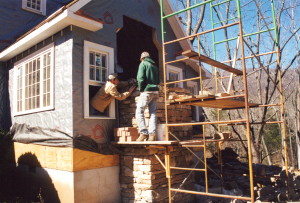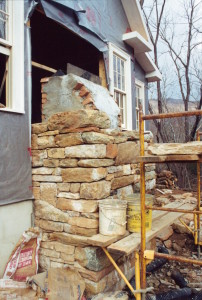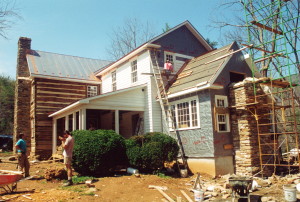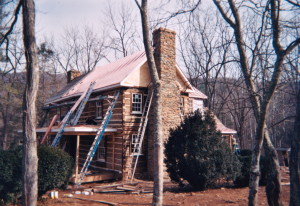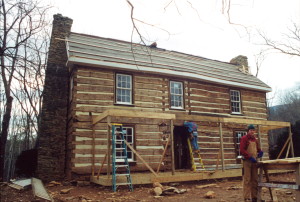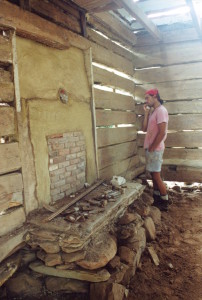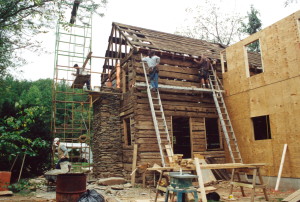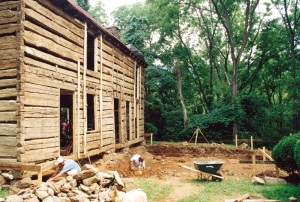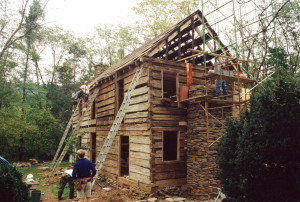Stone chimney… part 2
Here we see a secret stone mason method of laying stone revealed today for the first time!…
Whenever possible lay stone while reaching out of a window! lol
BTW… the stone mason seen here is Will, one of three talented masons who worked on our team over the years. Will went on to become a priest within the Episcopalian church after leaving us…. I was never certain if that was a compliment to those of us with whom he had worked with… or a means of recovery and penance for having put up with us during those years. 🙂
Originally posted 2015-06-13 15:12:03.

